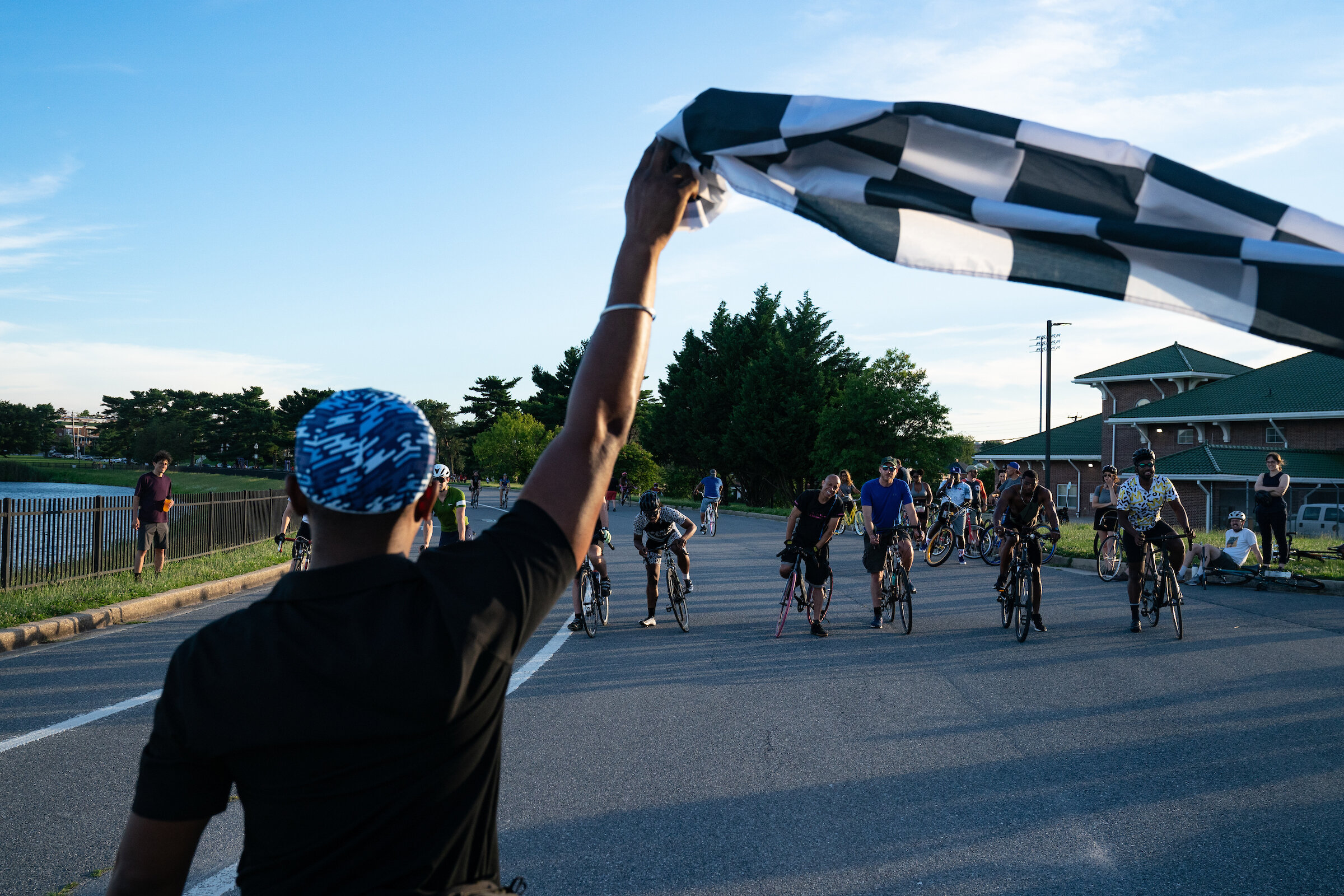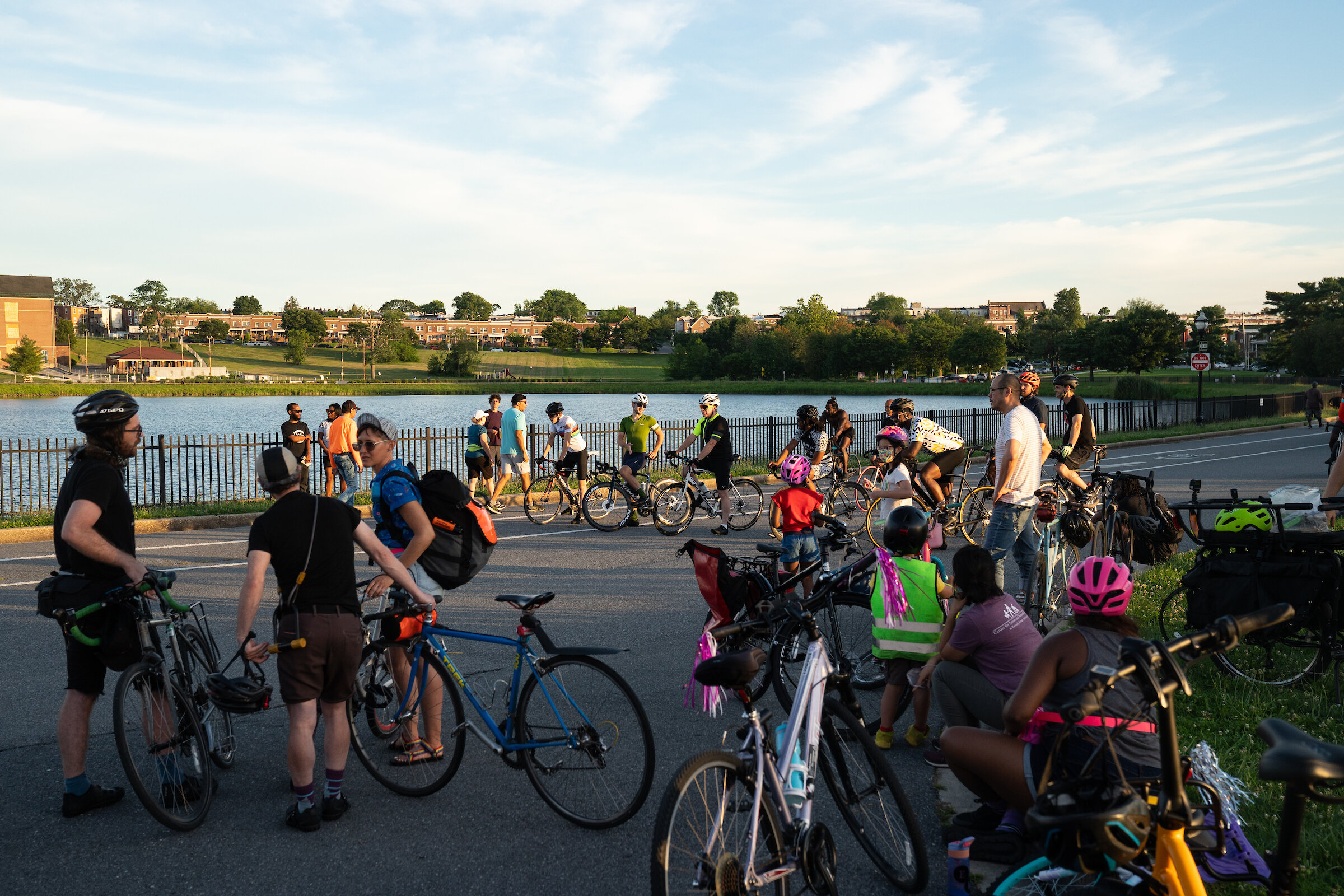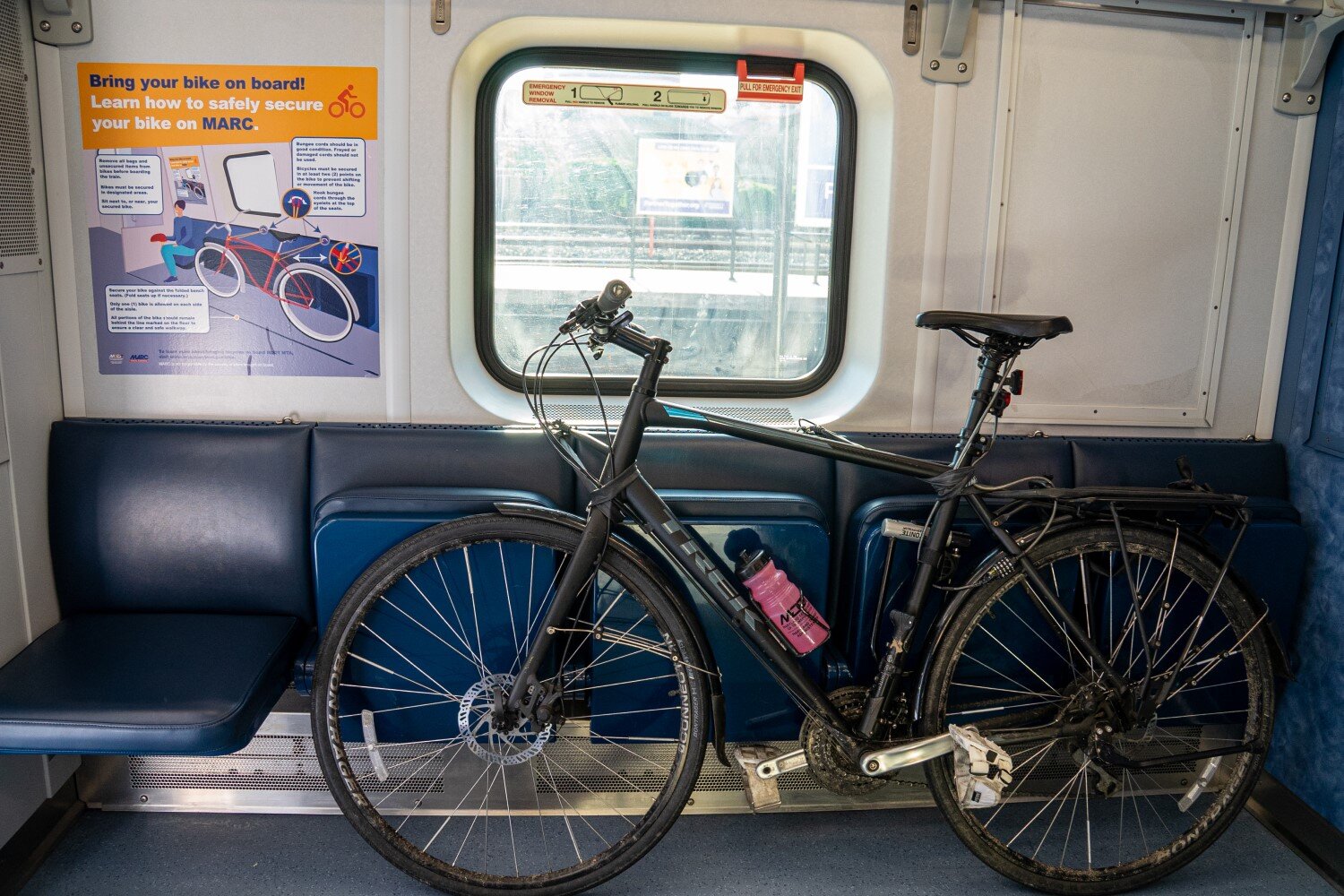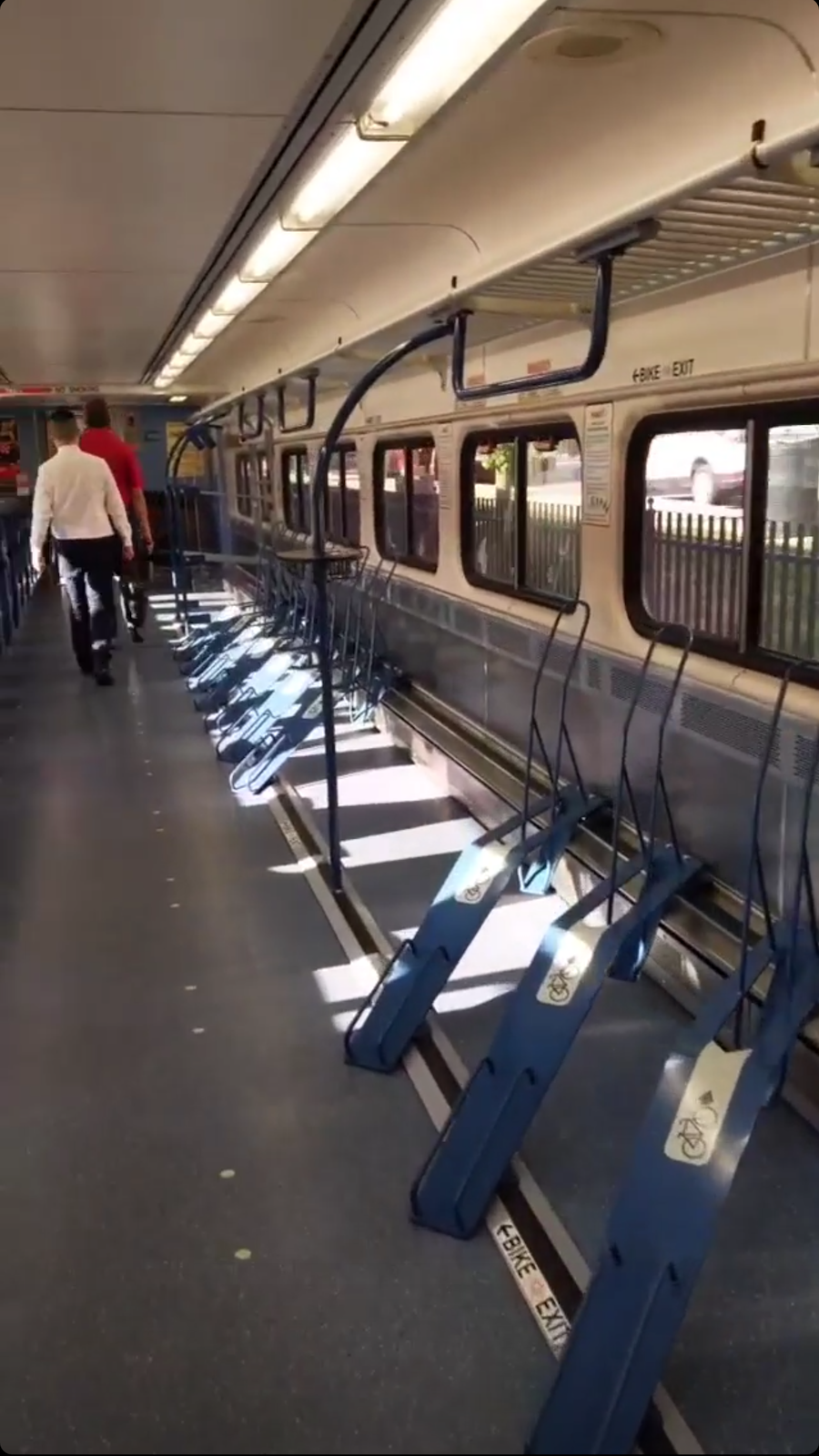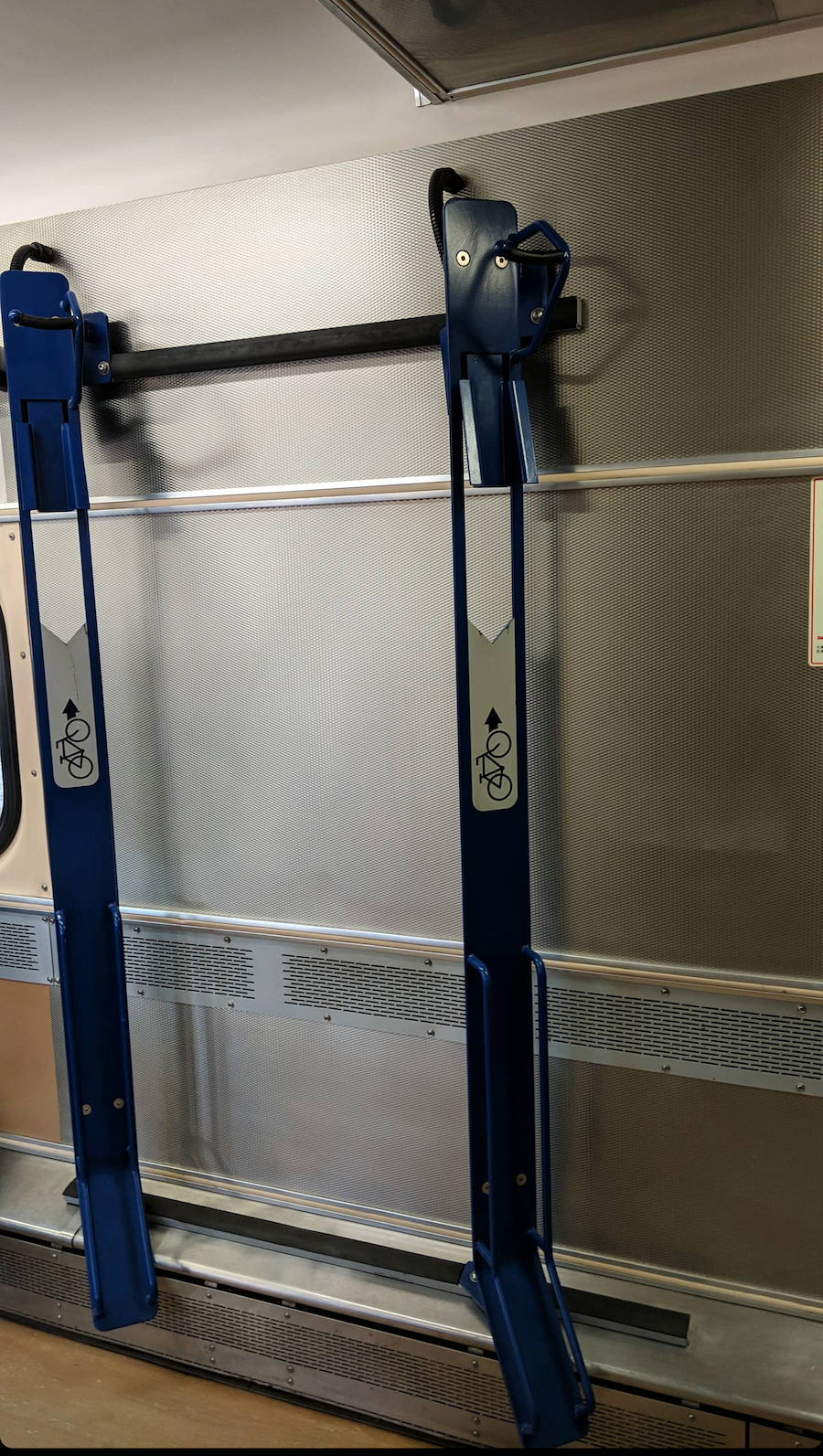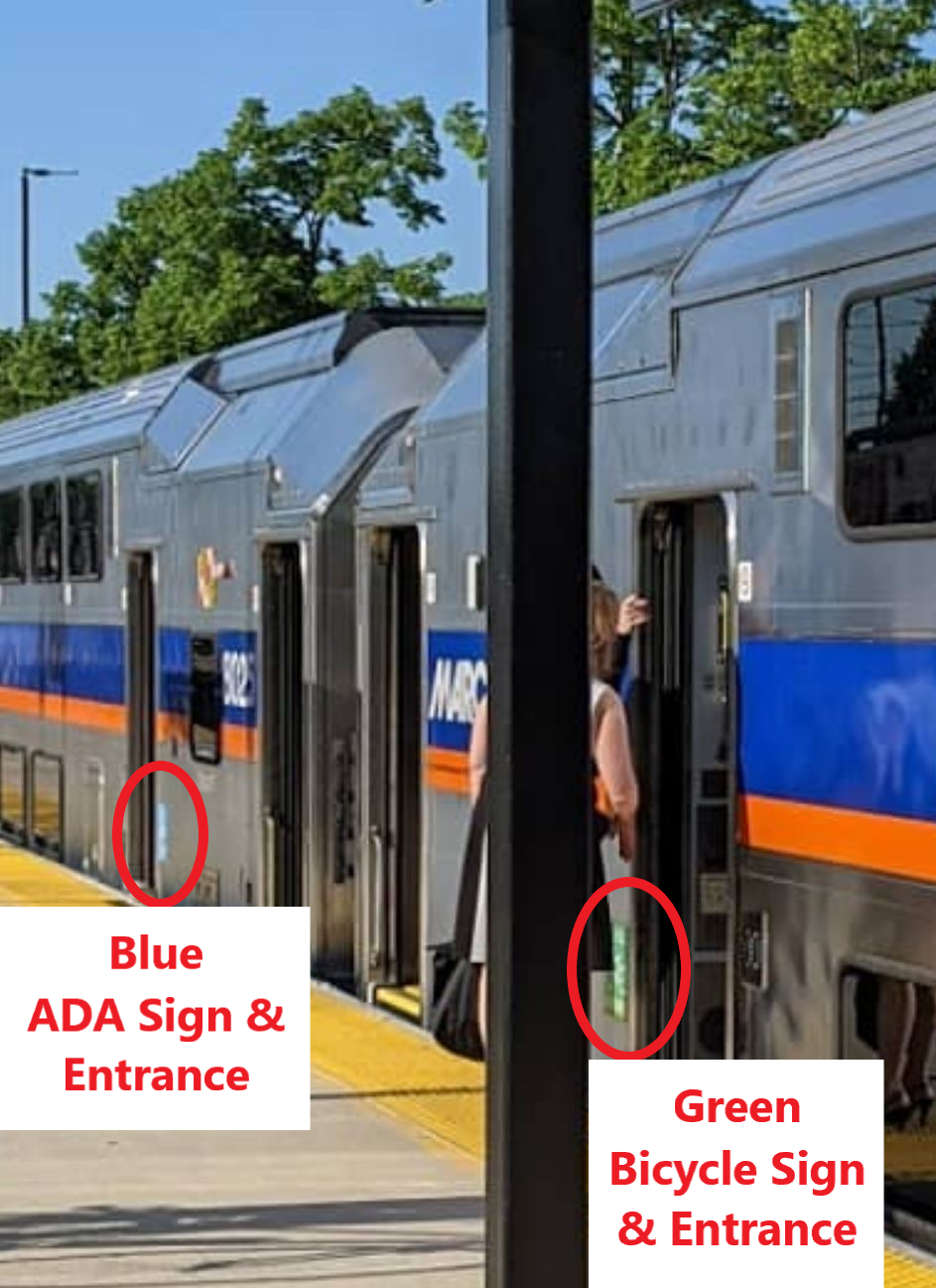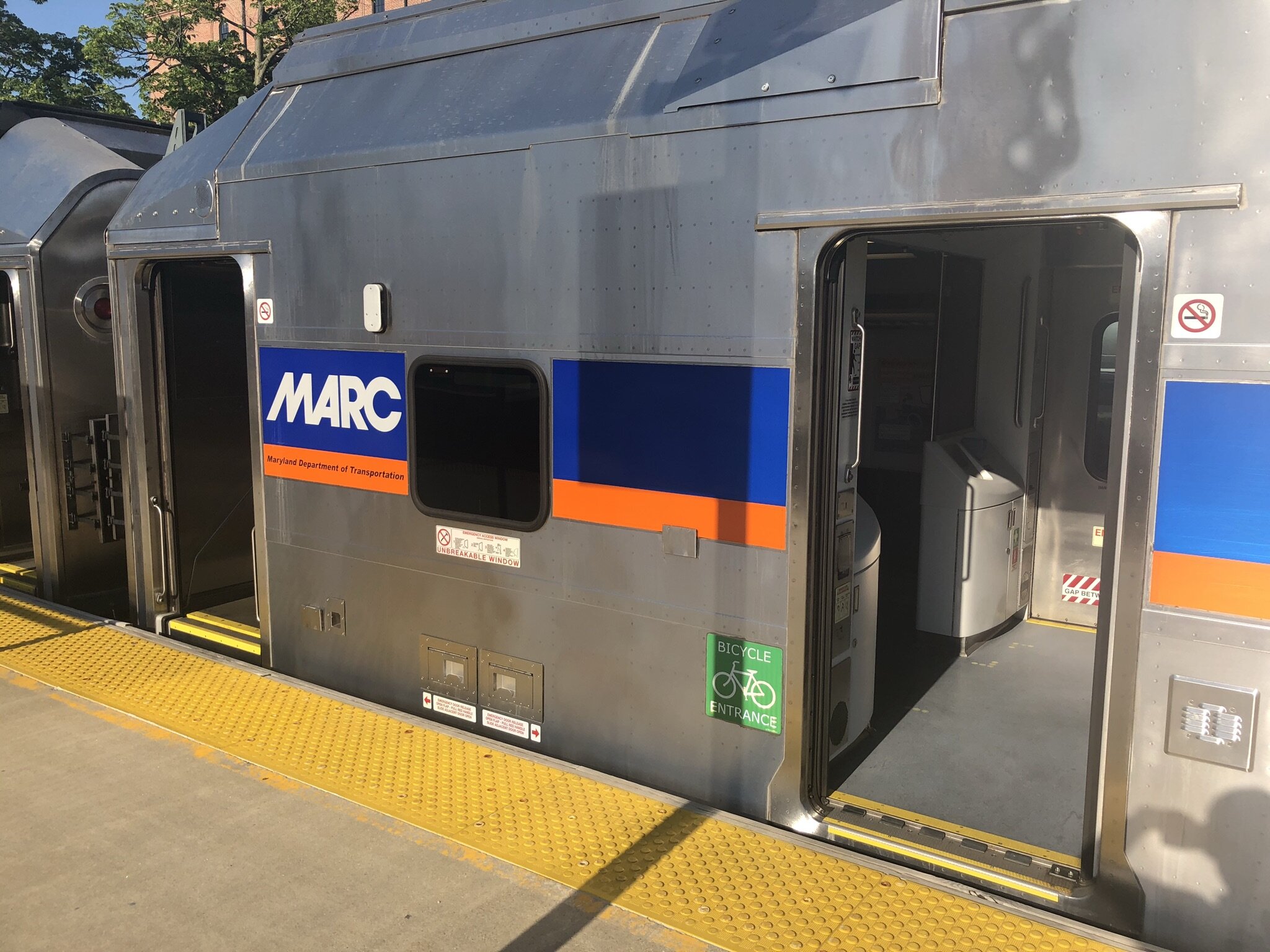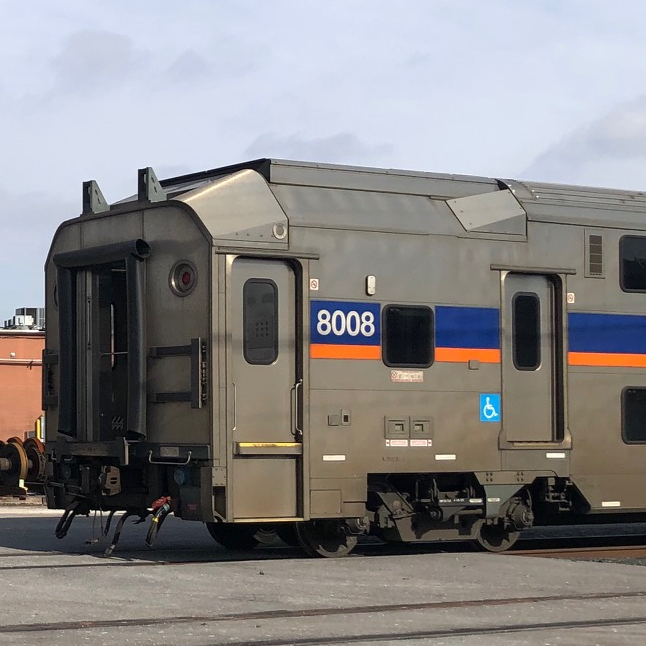This month, the Big Jump had a big win -- Bikemore and Baltimore City DOT were awarded a major grant from NACTO to improve traffic calming along the Big Jump and Lake Montebello and make the Big Jump semi-permanent infrastructure with concrete barriers and art. This is a huge step forward in our commitment to equitable and sustainable transportation.
Back in 2018, Baltimore City DOT installed the Big Jump as a temporary protected pathway that allowed for alternative forms of transportation across the 28th St. Bridge over the Jones Falls Expressway. For the first time, people could safely bike, run, stroll, skate, or otherwise travel across the bridge without a car between Reservoir Hill and Remington.
The implementation of the Big Jump worked to dismantle the systemic racism that divided these two neighborhoods sixty years ago – the nearby car-only JFX had sacrificed the connectivity of neighborhoods for more convenient commutes and white flight. For the 50% of households next to the Big Jump that lacked access to a vehicle, this was a game-changing development and opened up access to Druid Hill Park.
Most importantly, the Big Jump signaled that the Baltimore City DOT cared about re-designing our city to make it more accessible, sustainable, and equitable.
Now, we’re able to go even further: this money will help us strengthen the Big Jump with the help of our community: Graham Projects will lead enhancing the corridor with community-based art, Black People Ride Bikes will provide bike rides and safety lessons, and DOT will implement permanent traffic calming infrastructure in nearby areas.
Originally, we convinced the city to try out the Big Jump as a pilot project. But your support for the Big Jump changed the course of this story. Now, it’s a permanent example of equitable, accessible, and sustainable infrastructure.
Your donation means we can push harder for more innovative and equitable developments. Can we count on you to keep the momentum going?
Donations made through this form will go to our 501(c)(4), Bikemore in Action, our greatest need. To make a charitable donation through our 501(c)(3), click here.



